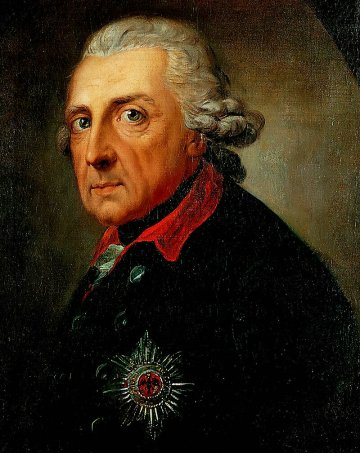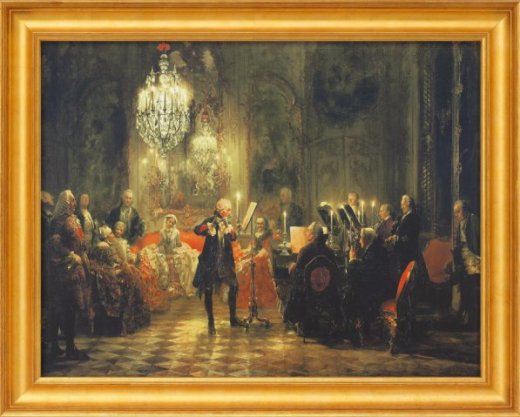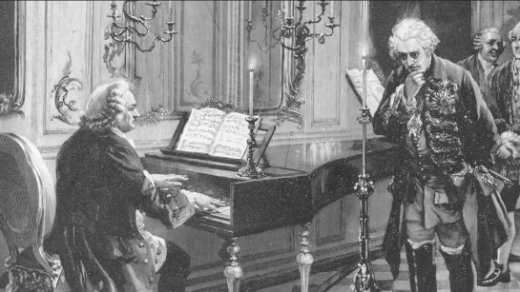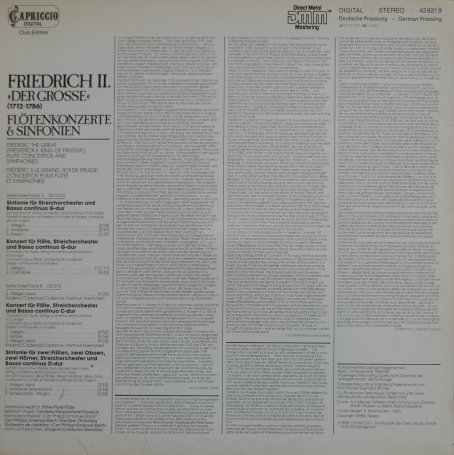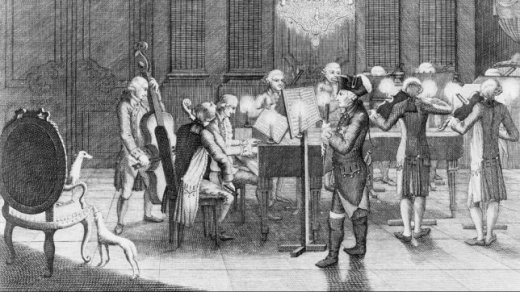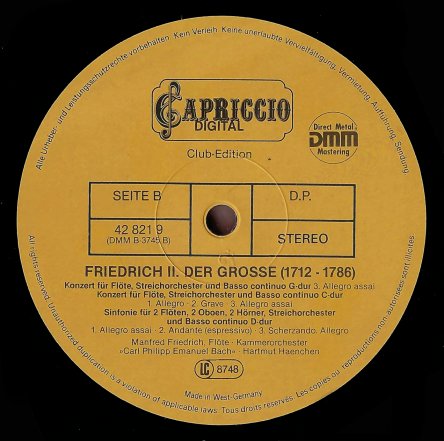 The Symphonie fantastique is a symphony written by the French composer Hector Berlioz. It is one of the most famous Romantic works for orchestra. The official title of the piece is Episode de la Vie d’un Artiste (An Episode in the Life of an Artist), but it is always called by its subtitle Symphonie Fantastique which means Fantasy Symphony. The “Fantasy” refers to the story that is described by the music. (Fantasy Symphony is a better translation than Fantastic Symphony because fantastique is not like the modern meaning of the English word fantastic).
The Symphonie fantastique is a symphony written by the French composer Hector Berlioz. It is one of the most famous Romantic works for orchestra. The official title of the piece is Episode de la Vie d’un Artiste (An Episode in the Life of an Artist), but it is always called by its subtitle Symphonie Fantastique which means Fantasy Symphony. The “Fantasy” refers to the story that is described by the music. (Fantasy Symphony is a better translation than Fantastic Symphony because fantastique is not like the modern meaning of the English word fantastic).
The symphony lasts about 45 minutes and is divided into 5 movements. Berlioz himself wrote down the story that the music describes, just as Beethoven had done with his Sixth Symphony. Berlioz’s work is about a young artist. In the music the young artist is represented by a tune. This tune is often heard during the symphony. That is why it is called an “idée fixe”, which means a “fixed idea”, i.e. an idea that keeps coming again and again. An idée fixe is what Wagner would have called a leitmotif (a tune which is always used to describe a particular person or thing in a piece of music). The first performance took place at the Paris Conservatoire in December 1830. Berlioz made several changes to the music between 1831 and 1845.

The symphony is played by an orchestra consisting of 2 flutes (2nd doubling piccolo), 2 oboes (2nd doubling cor anglais), 2 clarinets (1st doubling E-flat clarinet), 4 bassoons, 4 French horns, 2 trumpets, 2 cornets, 3 trombones, 2 ophicleides (originally one ophicleide and one serpent), 2 pairs of timpani, snare drum, cymbals, bass drum, bells in C and G, 2 harps, and strings.
The symphony is an example of programme music because it describes something apart from the music. In this case it describes a story. This is what the composer wrote:
First movement: A young artist was deeply in love with a girl who did not love him. He felt so desperately sad that he tried to poison himself with opium. He did not take enough to kill him. It just made him fall into a deep sleep. In this sleep he imagined all sorts of things. His beloved came to him in a dream. She changes into a musical theme (the idée fixe) which he just cannot forget. He imagines her love and his tender feelings for her.
Second movement: He meets her at a ball. Everyone is dancing. He finds his beloved among the crowd.

Third movement: In the country he hears two shepherds who call to one another on their pipes. The trees sway gently in the wind. The young artist starts to feel happier. Then he sees his beloved again. He starts to worry that she may not want him any more. The shepherd music starts again, but it is only one of the shepherds playing. The sun sets. Far away a thunderstorm is heard.
The fourth movement: He dreams that he has killed his beloved in a fit of anger. He is now being taken to the scaffold where he will have his head chopped off. A march is played as he is taken away. For a moment he thinks of his beloved again, then the axe falls and he is executed.
The fifth movement: The artist is at the Witches’ Sabbath. There are lots of ghosts and monsters around who have come to watch him being buried. His beloved is heard, but her tune now sounds horrible. She has come to the Sabbath. She joins the witches and they dance while the funeral music is heard.
The first movement: Rêveries – Passions (Daydreams – Passions)
The first movement has a slow introduction. The tune heard on the violins is already nearly like the idée fixe. The idée fixe is heard in its full form when the music goes into the fast section. It is played by the violins and solo flute. The rhythm that the lower string instruments play underneath is very agitated. The form of the movement is not much like the traditional sonata form. Berlioz was more interested in the idée fixe which keeps haunting the young artist all the way through.
The second movement: Un bal (A ball)
The ball (i.e. a party with dancing) is represented in the music by a lively waltz. The two harps make it sound very graceful. Twice the waltz is interrupted by the idée fixe.
The third movement: Scène aux champs (Scene in the country)
The two shepherds who are playing to one another are represented by a cor anglais (sitting in the orchestra) and an oboe which is played offstage so that it sounds distant. Then the main gentle countryside theme is heard on solo flute and violins. The idée fixe returns in the middle of the movement. The sound of distant thunder at the end of the movement is played by four timpani.
The fourth movement: Marche au supplice (March to the scaffold)
The movement starts with timpani rumbling and horns starting up the march theme. Then the cellos and double basses start the march in its full form, soon taken over by the violins. Just before he is executed there is a short repetition of the idée fixe on a solo clarinet, then the axe falls (a loud chord) and his head falls into the basket (one plucked note passed from the violins, through the violas, cellos and then double basses).
The fifth movement: Songe d’une nuit de sabbat (Dream of a witches’ Sabbath)
The idée fixe has now become a “vulgar dance tune”, it is played on the E-flat clarinet. There are lots of effects, including ghostly col legno playing in the strings, the bubbling of the witches’ cauldron played by the wind instruments. As the dance reaches a climax we hear the Dies Irae (Day of Judgement) melody together with the Ronde du Sabbat (Sabbath Round) which is a wild fugue.
Harriet Smithson
In 1827 Berlioz went to a performance of Shakespeare’s play Hamlet. It was played in English by a theatre group from England. Berlioz fell in love with Irish actress Harriet Smithson who played the part of Ophelia, He did not actually meet her, he just saw her acting on stage, but he sent her lots of love letters, but she left Paris without meeting him. He then wrote his Symphonie Fantastique. He then wrote the symphony to describe his love for her and his unhappiness because she was not interested in him. When Harriet heard the symphony two years after it was first performed, she realized that it was a symphony about her. She eventually met Berlioz and they were married on 3 October 1833. For several years the marriage was happy, although they did not speak one another’s language. However, after nine years they separated. (wikipedia)
Shit happens …

Pretty spooky stuff. And it’s spooky because those sounds you’re hearing come from the first psychedelic symphony in history, the first musical description ever made of a trip, written one hundred thirty odd years before the Beatles, way back in 1830 by the brilliant French composer Hector Berlioz (That’s Berlioz: the Z is pronounced). He called it Symphonie Fantastique, or “fantastic symphony,” and fantastic it is, in every sense of the word, including psychedelic. And that’s not just my own idea: It’s a fact, because Berlioz himself tells us so. Just listen to these first two sentences of his own program note that he wrote describing the symphony.
Doesn’t sound very different from modern days, does it? And we have every reason to suspect that the morbid young musician Berlioz is talking about is none other than Hector himself. He certainly did have fits of lovesick despair we’re told, and he was a creature of wild imagination–wild enough to have these visions and fantasies without taking a dose of anything. His opium was simply his genius, which could transform these grotesque fantasies into music. Now listen to the next sentence of that same program-note: “Even the beloved one, herself, [the one who’s made him lovesick] has become for him a melody, like a fixed idea which he hears everywhere, always returning.” Unquote. A fixed idea–remember that, in French — idée fixe, in other words, an obsession. You all know what an obsession is, it’s something that takes hold of your mind and won’t let go. Well, in this symphony the obsession is Berlioz’s beloved, she who has made him so desperately lovesick. She haunts the symphony; wherever the music goes, she keeps intruding and interrupting, returning in endless forms and shapes. (Leonard Bernstein)

Personnel:
New York Philharmonic conducted by Leonard Bernstein

Tracklist:
01. Rêveries – Passions (Daydreams – Passions) 13.14
02. Un bal (A Ball) 6.11
03. Scène aux champs (Scene In The Country) 15.03
04. Marche au supplice (March To The Scaffold) 7.03
05. Songe d’une nuit de sabbat (Dream Of A Witches’ Sabbath) 9.42

A German release:

More from Leonartd Bernstein in this blog:

The official website:



 A real unique album:
A real unique album:






 The Canadian Brass is a Canadian brass quintet formed in 1970 in Toronto, Ontario, by Charles Daellenbach (tuba) and Gene Watts (trombone), with horn player Graeme Page and trumpets Stuart Laughton and Bill Phillips completing the quintet. As of 2018, Daellenbach is the sole original member in the group, with the other members being trumpeters Caleb Hudson and Chris Coletti, hornist Jeff Nelsen and trombonist Achilles Liarmakopoulos.
The Canadian Brass is a Canadian brass quintet formed in 1970 in Toronto, Ontario, by Charles Daellenbach (tuba) and Gene Watts (trombone), with horn player Graeme Page and trumpets Stuart Laughton and Bill Phillips completing the quintet. As of 2018, Daellenbach is the sole original member in the group, with the other members being trumpeters Caleb Hudson and Chris Coletti, hornist Jeff Nelsen and trombonist Achilles Liarmakopoulos.












 Two great musicians:
Two great musicians:

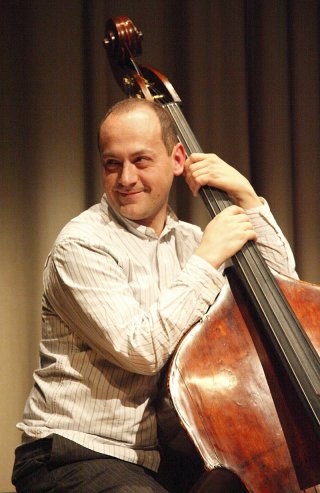









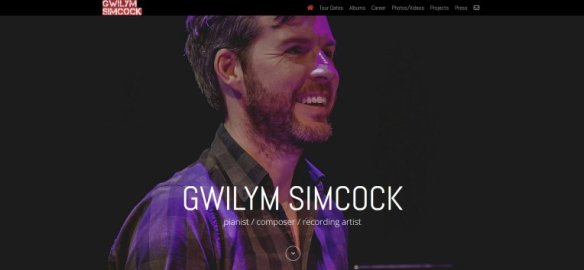


 Without Klaus Preis, this orchestra would not have been possible:
Without Klaus Preis, this orchestra would not have been possible:






 The Easter Oratorio (German: Oster-Oratorium), BWV 249, is an oratorio by Johann Sebastian Bach, beginning with Kommt, eilet und laufet (“Come, hasten and run”). Bach composed it in Leipzig and first performed it on 1 April 1725.
The Easter Oratorio (German: Oster-Oratorium), BWV 249, is an oratorio by Johann Sebastian Bach, beginning with Kommt, eilet und laufet (“Come, hasten and run”). Bach composed it in Leipzig and first performed it on 1 April 1725.






 Georg Philipp Telemann (14 March] 1681 – 25 June 1767) was a German Baroque composer and multi-instrumentalist. He is one of the most prolific composers in history, at least in terms of surviving oeuvre.
Georg Philipp Telemann (14 March] 1681 – 25 June 1767) was a German Baroque composer and multi-instrumentalist. He is one of the most prolific composers in history, at least in terms of surviving oeuvre.
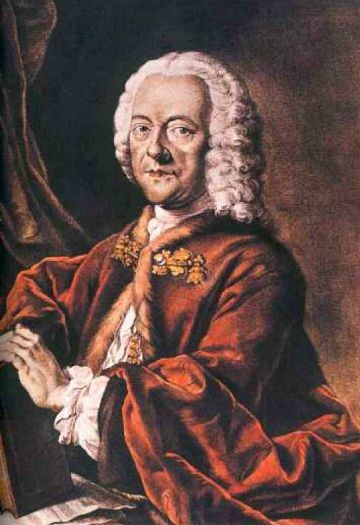








 George Frideric (or Frederick) Handel was a German-British Baroque composer well known for his operas, oratorios, anthems, concerti grossi, and organ concertos. Handel received his training in Halle and worked as a composer in Hamburg and Italy before settling in London in 1712, where he spent the bulk of his career and became a naturalised British subject in 1727. He was strongly influenced both by the middle-German polyphonic choral tradition and by composers of the Italian Baroque. In turn, Handel’s music forms one of the peaks of the “high baroque” style, bringing Italian opera to its highest development, creating the genres of English oratorio and organ concerto, and introducing a new style into English church music. He is consistently recognized as one of the greatest composers of his age.
George Frideric (or Frederick) Handel was a German-British Baroque composer well known for his operas, oratorios, anthems, concerti grossi, and organ concertos. Handel received his training in Halle and worked as a composer in Hamburg and Italy before settling in London in 1712, where he spent the bulk of his career and became a naturalised British subject in 1727. He was strongly influenced both by the middle-German polyphonic choral tradition and by composers of the Italian Baroque. In turn, Handel’s music forms one of the peaks of the “high baroque” style, bringing Italian opera to its highest development, creating the genres of English oratorio and organ concerto, and introducing a new style into English church music. He is consistently recognized as one of the greatest composers of his age.











 The Canadian Brass is a Canadian brass quintet formed in 1970 in Toronto, Ontario, by Charles Daellenbach (tuba) and Gene Watts (trombone), with horn player Graeme Page and trumpets Stuart Laughton and Bill Phillips completing the quintet. As of 2018, Daellenbach is the sole original member in the group, with the other members being trumpeters Caleb Hudson and Chris Coletti, hornist Jeff Nelsen and trombonist Achilles Liarmakopoulos.
The Canadian Brass is a Canadian brass quintet formed in 1970 in Toronto, Ontario, by Charles Daellenbach (tuba) and Gene Watts (trombone), with horn player Graeme Page and trumpets Stuart Laughton and Bill Phillips completing the quintet. As of 2018, Daellenbach is the sole original member in the group, with the other members being trumpeters Caleb Hudson and Chris Coletti, hornist Jeff Nelsen and trombonist Achilles Liarmakopoulos.






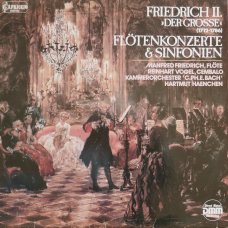 Frederick II (German: Friedrich II.; 24 January 1712 – 17 August 1786) was King in Prussia from 1740 until 1772, and King of Prussia from 1772 until his death in 1786. His most significant accomplishments include his military successes in the Silesian wars, his reorganisation of the Prussian Army, the First Partition of Poland, and his patronage of the arts and the Enlightenment. Frederick was the last Hohenzollern monarch titled King in Prussia, declaring himself King of Prussia after annexing Royal Prussia from the Polish–Lithuanian Commonwealth in 1772. Prussia greatly increased its territories and became a major military power in Europe under his rule. He became known as Frederick the Great (German: Friedrich der Große) and was nicknamed “Old Fritz” (German: der Alte Fritz). (wikipedia)
Frederick II (German: Friedrich II.; 24 January 1712 – 17 August 1786) was King in Prussia from 1740 until 1772, and King of Prussia from 1772 until his death in 1786. His most significant accomplishments include his military successes in the Silesian wars, his reorganisation of the Prussian Army, the First Partition of Poland, and his patronage of the arts and the Enlightenment. Frederick was the last Hohenzollern monarch titled King in Prussia, declaring himself King of Prussia after annexing Royal Prussia from the Polish–Lithuanian Commonwealth in 1772. Prussia greatly increased its territories and became a major military power in Europe under his rule. He became known as Frederick the Great (German: Friedrich der Große) and was nicknamed “Old Fritz” (German: der Alte Fritz). (wikipedia)